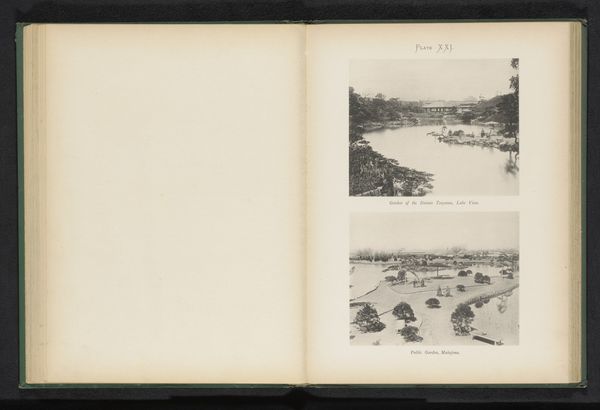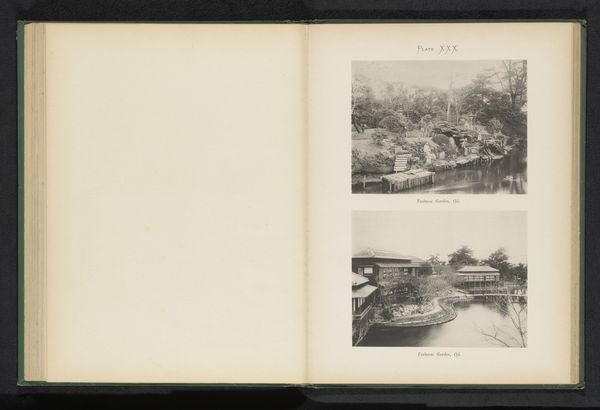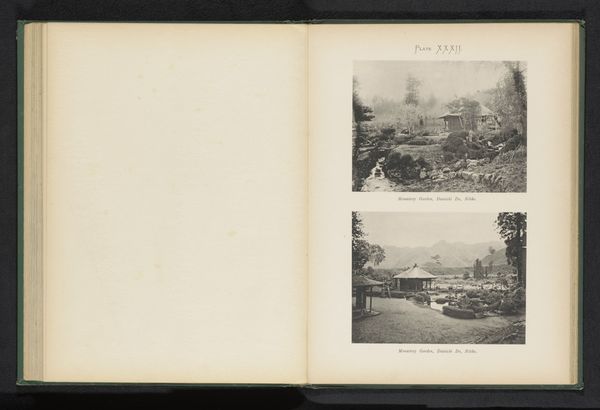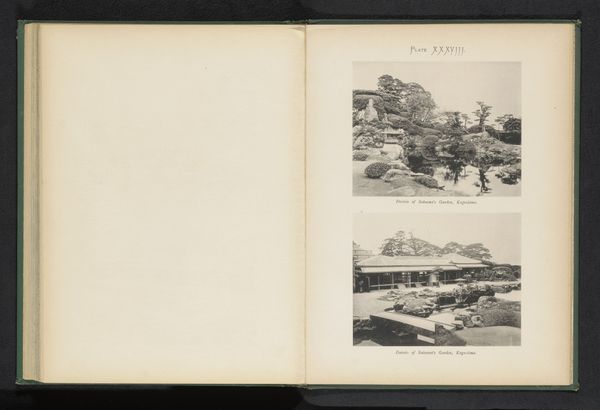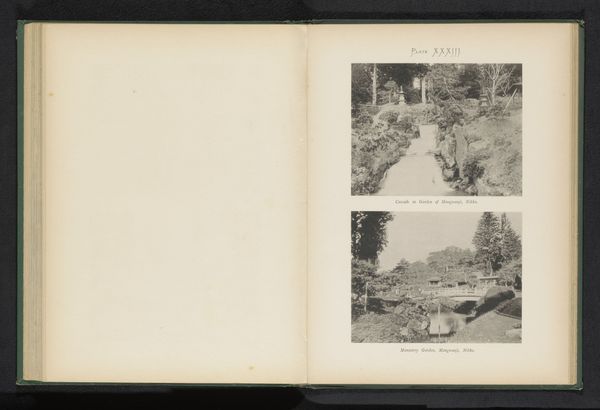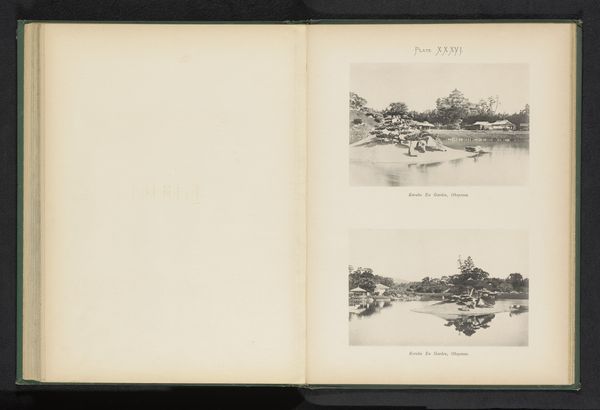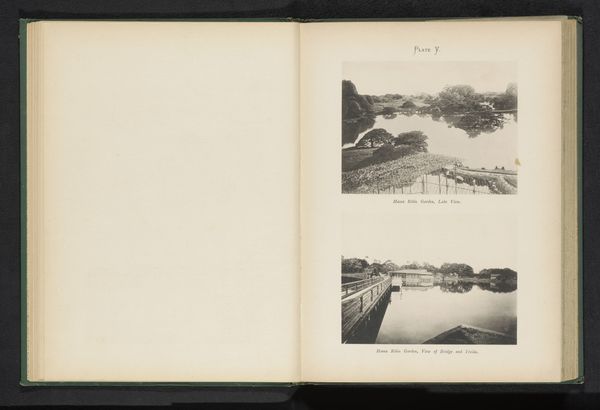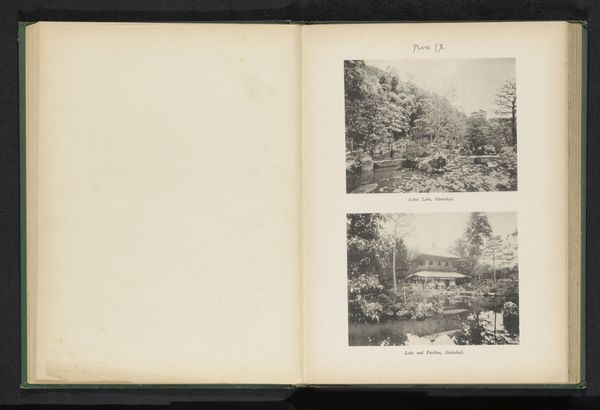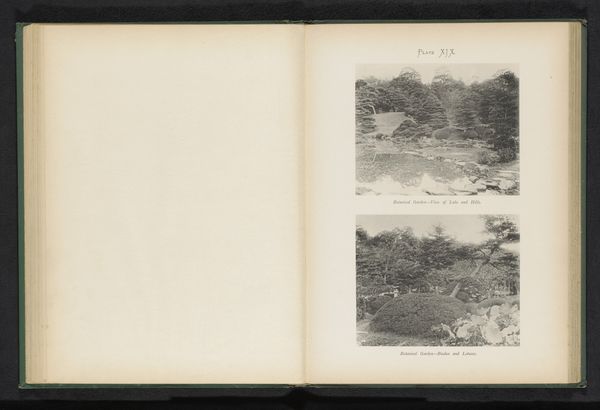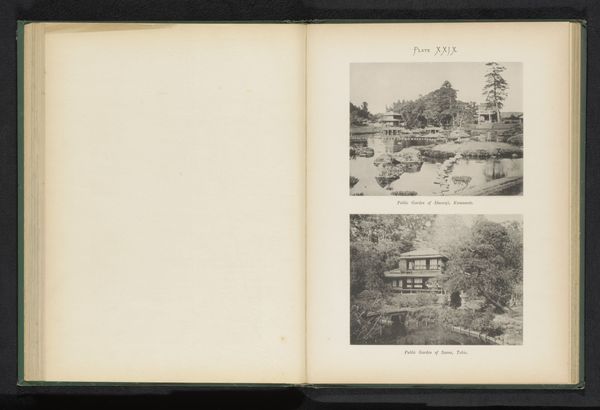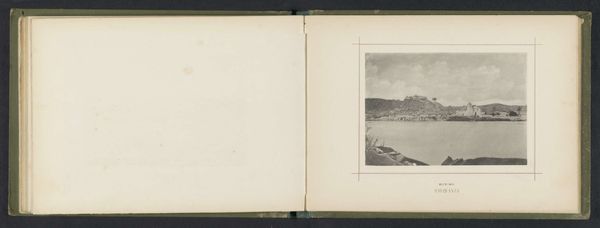
albumen-print, print, photography
#
albumen-print
# print
#
landscape
#
photography
Dimensions: height 356 mm, width 258 mm
Copyright: Rijks Museum: Open Domain
Editor: Here we have Kazumasa Ogawa’s “Twee gezichten op de Hotta-no-Niwa in Tokyo, Japan,” a photographic print from before 1893. What immediately strikes me is the tranquil mood; the composition and lighting create a sense of calm and almost ethereal beauty, but also one of curious observation. What stands out to you, in terms of visual elements or perhaps cultural context? Curator: You’re spot on about that sense of observation. It's almost voyeuristic, isn't it? I mean, think about Japonisme, that late 19th-century craze for all things Japanese in the West. To me, these images, beautifully rendered, obviously feed into that exoticism. These gardens weren't just landscapes; they were carefully constructed representations of Japanese aesthetics meant to be pondered over – like visual poems or Zen koans. I am reminded of my grandma’s garden back home when seeing those elements juxtaposed in such calculated beauty. What do you think about that interplay between constructed beauty and cultural fascination? Editor: That's a very keen observation. Now that I'm thinking about it, that perfectly manicured aesthetic is likely something that an external viewer at the time was particularly fond of. That curated exoticism is very apparent now that you mention it! Do you think this particular garden has any specific symbolism connected to it? Curator: Absolutely! Each element, from the placement of rocks to the carefully pruned trees, would have carried symbolic weight relating to broader philosophical ideas like harmony and balance. What this means for our reading of these particular prints is that there is a level of intention and depth which might very well surpass my grandma's rose bushes back home... This might reflect Ogawa's background, don’t you think? Editor: It certainly gives us something more to consider! Thank you for helping unpack that, especially when discussing symbolism. I didn't have this viewpoint coming into this conversation. Curator: My pleasure! It just goes to show how a little historical context can truly blossom into a whole new way of seeing things. Now, if you’ll excuse me, I feel like doing a bit of gardening of my own!
Comments
No comments
Be the first to comment and join the conversation on the ultimate creative platform.
